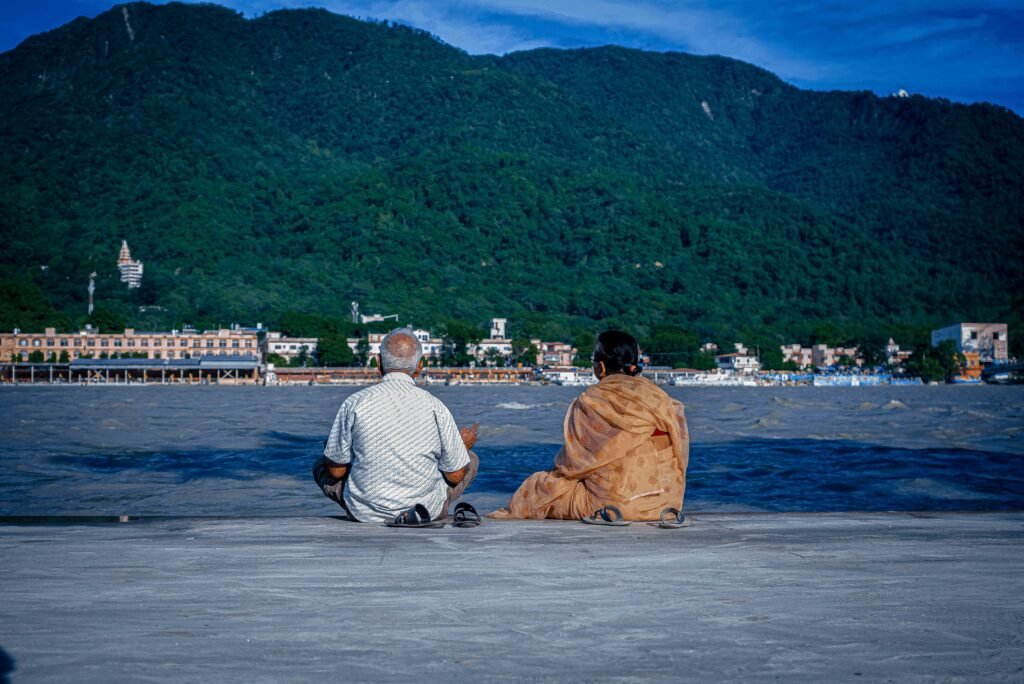I have spent years experimenting, failing, recalibrating, and refining my content strategy. Whether I was writing about social media trends, Ayurvedic remedies, or the complexities of personal branding, I discovered a golden thread that ran behind every successful piece: the harmony between content and search intent.
If content is the message, search intent is the music. The best results happen when they dance together. But getting there is not just about algorithms and keywords—it’s about deeply understanding people. Over time, I’ve learned to move beyond superficial SEO tactics and into the world of true empathy-driven marketing. In this article, I want to share my personal insights, failures, and frameworks for aligning content with search intent.
Where Is the Visitor?
Whenever I sit down to create, I start by asking myself: Where is the visitor right now in their journey?
The visitor is not a statistic in Google Analytics; they are a living, breathing individual navigating through a chain of curious questions, anxieties, or desires.
- If the visitor is at the awareness stage, they may be searching for foundational information. For example, “What is Ayurveda good for?”
- At consideration stage, the queries shift. Now it’s “Ayurvedic remedies for acidity versus allopathy remedies.” That’s comparison thinking.
- At decision stage, the queries get sharper: “Best Ayurvedic supplements for acidity in India under 1000 rupees.”
If I don’t know their location in this journey, my content risks missing the mark. A 5000-word explainer means nothing to someone who just wants a quick “Yes/No” style answer. Likewise, a shallow 300-word listicle might frustrate someone researching for a thesis.
Understanding where the visitor is helps me create content that becomes the right answer at the right moment—which is the essence of how content and search intent meet.
Does My Content Match the Search Intent?
This is the brutal self-check I run before publishing: Does my content actually match the underlying search intent?
Take for example, the keyword: “best meditation apps 2025.”
If I deliver:
- A history of meditation,
- The neurological background of mindfulness,
- Tips on how monks meditate…
I’ve missed the point. That query didn’t ask for philosophy—it asked for comparisons of apps. The expectation is: brand names, features, pricing, screenshots, and maybe pros/cons.
When I realized this in my work, I began adapting formats:
- Informational intent: Guides, explainers, in-depth research papers.
- Navigational intent: Clear paths, verifying resources, direct links.
- Transactional intent: Reviews, calls-to-action, easy click journeys.
- Commercial investigation: Listicles, comparisons, testimonials.
By constantly asking, does my content match the search intent, I stopped falling into the trap of “creating brilliant but irrelevant” pieces.
Building Trust User by User
SEO professionals love scale. But my experience taught me that alignment of content and search intent is an intimate process, built one user at a time. Every visitor testing my content is essentially asking: can I trust this voice?
Trust is built in subtle ways:
- Clarity: No jargon if the intent is basic.
- Transparency: Declaring limitations. For example, in Ayurvedic guides, I mention “consult your practitioner before making lifestyle changes.”
- Depth: If someone came for in-depth insight, they should feel richer after reading.
- Tone: If the intent is emotional reassurance (for example, “how to say no politely to relatives”), then a warm, empathetic voice is more important than being “SEO-perfect.”
I began thinking of each page visit as a silent handshake. If I met intent well, that handshake turned into trust, repeat visits, even conversions. If not, it ended with a polite but permanent goodbye.
Navigational Customer Experience and UI for Holistic Answers
One of the overlooked aspects of meeting search intent isn’t just words—it’s design and navigation.
If someone lands on my site searching for “Ayurvedic diet for Diabetes,” they don’t just want text. They want:
- Scannable diet charts,
- Hyperlinks to recipes,
- Easy navigation to “Dos and Don’ts,”
- Maybe even a print button for practicality.
Search intent isn’t satisfied by words alone; it’s satisfied by experience. Which means UI and navigation become part of content.
Helpful UI elements like jump-links (to skip to “Treatment Recipes”), collapsible FAQs, or even videos embedded in long-form articles help a visitor feel their needs were respected.
To me, navigational customer experience is not an add-on; it’s part of the holistic delivery of content and search intent together.
My Failures That Became Teachers
I’d be lying if I said I figured this out early. My failures taught me more than my successes.
Like the time I wrote a 5000-word essay on “marketing automation trends” for a query that was transactional in nature (“best marketing automation tools 2023”).
Result: Visitors scrolled, sighed, and left. They weren’t there for a lecture—they were looking for a list. I gave them Shakespeare when they wanted a shopping guide.
Another time, I created quick, 500-word surface-level content for “Yoga therapy for hypertension research.” That search intent was academic depth. My fluff pieces didn’t stand a chance.
Both failures taught me the golden rule: intent must shape format, not the other way around.
Beyond Keywords: Reading Between the Lines
A breakthrough in my content career came when I stopped obsessing about “keywords” and started decoding psychology.
- A person typing “how to make Ayurvedic kadha at home” is probably ill and wants urgent help.
- A person typing “best 7-day detox retreat in India” has more time, disposable income, and is trying to plan.
- A person typing “what is a detox kadha” is still in curiosity phase.
Three similar keywords but radically different intents.
If I flatten them into “content about kadha,” I miss nuance. But if I listen beyond words—into urgency, curiosity, or commitment—I strike the right tone. That’s the deep marriage of content and search intent.
Anticipating the Next Question
A content piece fully aligned with search intent doesn’t stop at answering the immediate query. It anticipates the next question.
For example, if I write on “intermittent fasting benefits,” I know the next likely queries are:
- “Does intermittent fasting have risks?”
- “What should I eat during fasting hours?”
- “Is it scientifically proven?”
So, a great piece of content doesn’t just stop at “here are the benefits.” It gently transitions into FAQs, practical recipes, and links to research papers—creating a comprehensive experience.
In my personal writing mantra: Answer the question behind the question.
Storytelling to Capture Intent
One of the underestimated weapons I use is personal storytelling. For instance:
Someone searches “how to say no at Indian family dinners without offending people.” Now, I could give a sterile bulleted guide on “5 polite refusal phrases.”

Instead, I shared a personal anecdote of refusing a third helping of biryani at an aunt’s dinner and how humor lightened the situation. The piece resonated more, not because it was informative, but because it met the emotional intent behind the query.
That’s when I realized: content and search intent alignment isn’t purely rational; it must respect emotional subtext.
The Mechanics I Use Daily
Here’s my personal step-by-step habit when crafting content:
- Study SERPs – If 8 out of the first 10 results are listicles, I don’t write an essay. If they are deep research reports, I don’t cut corners.
- Check People Also Ask – This feature tells me the hidden dimensions of intent.
- Segment Personas – One query can have multiple personas. My solution? Serve layered answers. Give summaries upfront for quick readers and deep dives for researchers.
- Design for Navigation – Use subheadings, lists, jump links. Search intent meets frustration if scrolling feels like a chore.
- Test with Readers – I occasionally ask friends: “If you searched this, does this piece feel like the answer?” That human validation guides me more than keyword density ever could.
Beyond the Click: Trust and Loyalty
Meeting search intent isn’t just about ranking—it’s about retention.
If a person lands on my article about “Ayurvedic remedies for GERD,” finds exactly what they wanted (with safety disclaimers, diet charts, and even personal notes), they may return to my site later for “Ayurvedic lifestyle for sleep problems.”
That repeat visit is proof that the invisible thread of trust was tied. And for me, this is bigger than traffic spikes—it’s long-term brand building.
The Future of Content and Search Intent
Looking ahead, I believe the conversation between content and search intent will only grow more nuanced.
- Voice Search: People talk differently than they type. “Best budget hotels Delhi” becomes “Hey Google, what are the best budget-friendly hotels near Connaught Place for under 2000 rupees a night?” Content must adapt to these conversational forms.
- AI-Powered Search: As AI summarizes and curates, only content deeply aligned with specific intent will surface. Fluff is dead.
- Personalization: Search engines increasingly tailor results to context—location, history, even mood. Intent analysis will become hyper-individualized.
In such a world, creators like me must constantly polish our empathy, clarity, and adaptability.
My Personal Mantra
Today, when I write, I pause before the first sentence and ask myself:
What does the person behind this query truly want—not just in words, but in feelings and outcomes?
If I answer that authentically, my content aligns with search intent. If not, I’m just filling internet space.
My mantra is simple: Content without intent is noise. Content with aligned intent is music. And I’d much rather create music that resonates, even if it’s with just one user at a time.


0 Comments